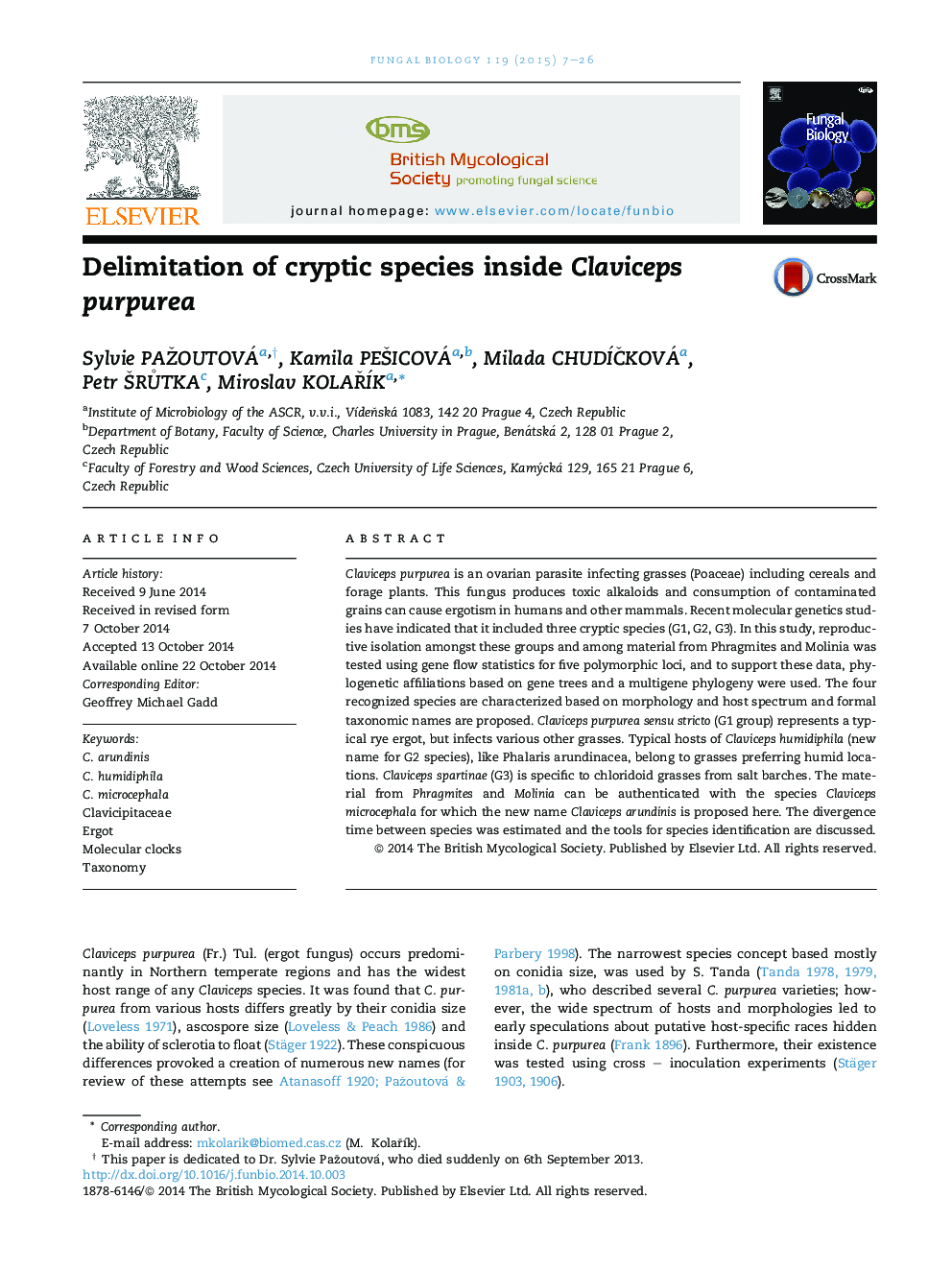| Article ID | Journal | Published Year | Pages | File Type |
|---|---|---|---|---|
| 4356890 | Fungal Biology | 2015 | 20 Pages |
•Data from 5 genes and 69 Claviceps purpurea specimens from various hosts and locations were used.•Application of the genealogical sorting index and population genetic analysis showed presence of four cryptic species.•The divergence time and the historical demography of the cryptic species were estimated.•We showed that both host and ecological speciation occurred in the evolution of C. purpurea species complex.•Formal taxonomic names are provided.
Claviceps purpurea is an ovarian parasite infecting grasses (Poaceae) including cereals and forage plants. This fungus produces toxic alkaloids and consumption of contaminated grains can cause ergotism in humans and other mammals. Recent molecular genetics studies have indicated that it included three cryptic species (G1, G2, G3). In this study, reproductive isolation amongst these groups and among material from Phragmites and Molinia was tested using gene flow statistics for five polymorphic loci, and to support these data, phylogenetic affiliations based on gene trees and a multigene phylogeny were used. The four recognized species are characterized based on morphology and host spectrum and formal taxonomic names are proposed. Claviceps purpurea sensu stricto (G1 group) represents a typical rye ergot, but infects various other grasses. Typical hosts of Claviceps humidiphila (new name for G2 species), like Phalaris arundinacea, belong to grasses preferring humid locations. Claviceps spartinae (G3) is specific to chloridoid grasses from salt barches. The material from Phragmites and Molinia can be authenticated with the species Claviceps microcephala for which the new name Claviceps arundinis is proposed here. The divergence time between species was estimated and the tools for species identification are discussed.
Graphical abstractFigure optionsDownload full-size imageDownload as PowerPoint slide
